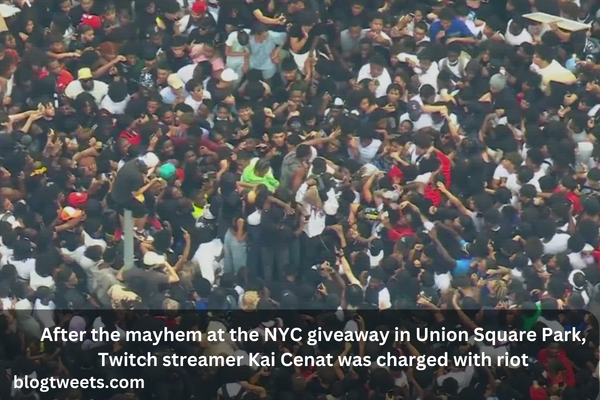The United States and Canada have closed a loophole that allowed asylum seekers to cross the border

On Friday, US President Joe Biden and Canadian Prime Minister Justin Trudeau announced a plan to close a loophole in an immigration agreement that has allowed thousands of asylum seekers to travel between the two countries along a back road connecting New York state to the Canadian province of Quebec.
Since early 2017, so many migrants have walked into Canada on Roxham Road outside Champlain, New York, that the Royal Canadian Mounted Police have set up a reception centre less than five miles (8 kilometres) from the official border crossing.
Mounties have warned migrants at the end of the narrow two-lane road bordered by forests and farm fields that if they cross the border, they will be arrested. However, once on Canadian soil, they have been permitted to remain and pursue asylum cases, which can take years to resolve.
According to the new policy, asylum seekers without US or Canadian citizenship who are apprehended within 14 days of crossing anywhere along the 3,145-mile (5,061-kilometer) border will be deported. This includes pedestrians on Roxham Road.
According to Canadian officials who spoke on the condition of anonymity to discuss the deal ahead of time, the agreement was set to go into effect at 12:01 a.m. Saturday — a quick implementation aimed at avoiding a surge of refugee claimants attempting to cross.
The last migrants to arrive before the Biden-Trudeau announcement were about eight people in two families, one from Haiti and the other from Afghanistan, who arrived at the US end of Roxham Road shortly after dawn on Friday. Both claimed to have taken detours to get there.
Gerson Solay, 28, walked up to the border with his daughter Bianca. He claimed he lacked the necessary documents to remain in the United States. “That is why Canada is my final destination,” he explained before being arrested and processed.
It’s unclear how Roxham Road became a popular route, but it’s only a taxi ride from where Interstate 87 approaches the Canadian border, and it’s a relatively short distance to New York City for southbound migrants.
These migrants took advantage of a loophole in a 2002 agreement between the United States and Canada that requires asylum seekers to apply in the first country they arrive in. Migrants who use an official Canadian crossing are sent back to the United States and told to apply there. Those who arrive in Canada somewhere other than a port of entry, such as the centre near Roxham Road, are allowed to stay and seek protection.
Some immediately criticised the agreement, claiming that it could jeopardise the safety of asylum seekers by preventing them from receiving needed assistance from both governments.
“We strongly urge President Biden to reconsider this agreement and work with Congress to restore access to asylum and support policies that recognise the dignity of all those arriving at our borders,” said Danilo Zak, associate director for policy and advocacy at the humanitarian organisation CWS, also known as Church World Services. The organisation advocates for people who have been displaced from their homes all over the world.
The agreement comes as the United States Border Patrol responds to a significant increase in illegal southbound crossings along the wide-open Canadian border. Almost all occur in northern New York and Vermont, along the border between Canada’s two largest cities, Toronto and Montreal.
While the numbers are still small in comparison to the US-Mexico border, it’s happening so frequently that the Border Patrol has increased its staffing in the area and begun releasing some migrants into Vermont with a future date to appear before immigration authorities.
As part of the agreement, Canada agreed to allow 15,000 Western Hemisphere migrants to seek asylum on a humanitarian basis over the course of the year.
The United States and Canada have closed a loophole that allowed asylum seekers to cross the border.
By WILSON RING on Friday, March 24, 2023, Haitian migrant Gerson Solay, 28, carries his daughter, Bianca, as he and his family cross into Canada at the non-official Roxham Road border crossing north of Champlain, N.Y. A new US-Canadian migration agreement closes a loophole that has allowed migrants who enter Canada illegally to remain in the country while waiting for an asylum decision. Hasan Jamali/AP Photo
Gerson Solay, 28, a Haitian migrant, carries his daughter, Bianca, as he and his family cross into Canada on Friday, March 24, 2023, at the non-official Roxham Road border crossing north of Champlain, N.Y. A new US-Canadian migration agreement closes a loophole that has allowed migrants who enter Canada illegally to remain in the country while waiting for an asylum decision. Hasan Jamali/AP Photo
ST. JOHNSBURY, Vt. (AP) — On Friday, US President Joe Biden and Canadian Prime Minister Justin Trudeau announced a plan to close a loophole in an immigration agreement that has allowed thousands of asylum seekers to travel between the two countries along a back road connecting New York state to the Canadian province of Quebec.
Since early 2017, so many migrants have walked into Canada on Roxham Road outside Champlain, New York, that the Royal Canadian Mounted Police have set up a reception centre less than five miles (8 kilometres) from the official border crossing.
Mounties have warned migrants at the end of the narrow two-lane road bordered by forests and farm fields that if they cross the border, they will be arrested. However, once on Canadian soil, they have been permitted to remain and pursue asylum cases, which can take years to resolve.
According to the new policy, asylum seekers without US or Canadian citizenship who are apprehended within 14 days of crossing anywhere along the 3,145-mile (5,061-kilometer) border will be deported. This includes pedestrians on Roxham Road.
According to Canadian officials who spoke on the condition of anonymity to discuss the deal ahead of time, the agreement was set to go into effect at 12:01 a.m. Saturday — a quick implementation aimed at avoiding a surge of refugee claimants attempting to cross.
The last migrants to arrive before the Biden-Trudeau announcement were about eight people in two families, one from Haiti and the other from Afghanistan, who arrived at the US end of Roxham Road shortly after dawn on Friday. Both claimed to have taken detours to get there.
Gerson Solay, 28, walked up to the border with his daughter Bianca. He claimed he lacked the necessary documents to remain in the United States. “That is why Canada is my final destination,” he explained before being arrested and processed.
It’s unclear how Roxham Road became a popular route, but it’s only a taxi ride from where Interstate 87 approaches the Canadian border, and it’s a relatively short distance to New York City for southbound migrants.
These migrants took advantage of a loophole in a 2002 agreement between the United States and Canada that requires asylum seekers to apply in the first country they arrive in. Migrants who use an official Canadian crossing are sent back to the United States and told to apply there. Those who arrive in Canada somewhere other than a port of entry, such as the centre near Roxham Road, are allowed to stay and seek protection.
Some immediately criticised the agreement, claiming that it could jeopardise the safety of asylum seekers by preventing them from receiving needed assistance from both governments.
“We strongly urge President Biden to reconsider this agreement and work with Congress to restore access to asylum and support policies that recognise the dignity of all those arriving at our borders,” said Danilo Zak, associate director for policy and advocacy at the humanitarian organisation CWS, also known as Church World Services. The organisation advocates for people who have been displaced from their homes all over the world.
The agreement comes as the United States Border Patrol responds to a significant increase in illegal southbound crossings along the wide-open Canadian border. Almost all occur in northern New York and Vermont, along the border between Canada’s two largest cities, Toronto and Montreal.
While the numbers are still small in comparison to the US-Mexico border, it’s happening so frequently that the Border Patrol has increased its staffing in the area and begun releasing some migrants into Vermont with a future date to appear before immigration authorities.
As part of the agreement, Canada agreed to allow 15,000 Western Hemisphere migrants to seek asylum on a humanitarian basis over the course of the year.
Meanwhile, southbound migrants are putting pressure on US border officials.
Border Patrol agents stopped migrants entering the United States illegally from Canada 628 times in February, more than five times the same period the previous year. Those figures pale in comparison to migrants entering from Mexico, where they were stopped more than 220,000 times in December alone, but they represent a significant change in percentage terms.
In the Swanton Sector of the Border Patrol, which includes New Hampshire, Vermont, and a portion of upstate New York, agents stopped migrants 418 times in February, up more than ten times from the previous year. About half of those entering Canada have been Mexicans, who can fly to Canada visa-free from Mexico.
About an hour south of the border, the police chief in St. Johnsbury, Vermont, population 6,000, notified state officials that the Border Patrol had dropped off a vanload of immigrants at the community’s welcome centre with only a few minutes’ notice. The same thing has happened several times in the last few weeks.
According to a statement issued by US Customs and Border Protection, the migrants dropped off in St. Johnsbury were apprehended along the border after illegally entering the US and were given a notice to appear for further immigration proceedings.
They were dropped off in St. Johnsbury because it has a bus station from which migrants can travel to larger cities.
“In such cases, USBP collaborates with local communities to ensure the safety of all parties—both community members and migrants—as well as the stability of the community’s resources,” according to the statement.
The United States and Canada have closed a loophole that allowed asylum seekers to cross the border.
By WILSON RING on Friday, March 24, 2023, Haitian migrant Gerson Solay, 28, carries his daughter, Bianca, as he and his family cross into Canada at the non-official Roxham Road border crossing north of Champlain, N.Y. A new US-Canadian migration agreement closes a loophole that has allowed migrants who enter Canada illegally to remain in the country while waiting for an asylum decision. Hasan Jamali/AP Photo
Gerson Solay, 28, a Haitian migrant, carries his daughter, Bianca, as he and his family cross into Canada on Friday, March 24, 2023, at the non-official Roxham Road border crossing north of Champlain, N.Y. A new US-Canadian migration agreement closes a loophole that has allowed migrants who enter Canada illegally to remain in the country while waiting for an asylum decision. Hasan Jamali/AP Photo
ST. JOHNSBURY, Vt. (AP) — On Friday, US President Joe Biden and Canadian Prime Minister Justin Trudeau announced a plan to close a loophole in an immigration agreement that has allowed thousands of asylum seekers to travel between the two countries along a back road connecting New York state to the Canadian province of Quebec.
Since early 2017, so many migrants have walked into Canada on Roxham Road outside Champlain, New York, that the Royal Canadian Mounted Police have set up a reception centre less than five miles (8 kilometres) from the official border crossing.
Mounties have warned migrants at the end of the narrow two-lane road bordered by forests and farm fields that if they cross the border, they will be arrested. However, once on Canadian soil, they have been permitted to remain and pursue asylum cases, which can take years to resolve.
According to the new policy, asylum seekers without US or Canadian citizenship who are apprehended within 14 days of crossing anywhere along the 3,145-mile (5,061-kilometer) border will be deported. This includes pedestrians on Roxham Road.
According to Canadian officials who spoke on the condition of anonymity to discuss the deal ahead of time, the agreement was set to go into effect at 12:01 a.m. Saturday — a quick implementation aimed at avoiding a surge of refugee claimants attempting to cross.
The last migrants to arrive before the Biden-Trudeau announcement were about eight people in two families, one from Haiti and the other from Afghanistan, who arrived at the US end of Roxham Road shortly after dawn on Friday. Both claimed to have taken detours to get there.
Gerson Solay, 28, walked up to the border with his daughter Bianca. He claimed he lacked the necessary documents to remain in the United States. “That is why Canada is my final destination,” he explained before being arrested and processed.
It’s unclear how Roxham Road became a popular route, but it’s only a taxi ride from where Interstate 87 approaches the Canadian border, and it’s a relatively short distance to New York City for southbound migrants.
These migrants took advantage of a loophole in a 2002 agreement between the United States and Canada that requires asylum seekers to apply in the first country they arrive in. Migrants who use an official Canadian crossing are sent back to the United States and told to apply there. Those who arrive in Canada somewhere other than a port of entry, such as the centre near Roxham Road, are allowed to stay and seek protection.
Some immediately criticised the agreement, claiming that it could jeopardise the safety of asylum seekers by preventing them from receiving needed assistance from both governments.
“We strongly urge President Biden to reconsider this agreement and work with Congress to restore access to asylum and support policies that recognise the dignity of all those arriving at our borders,” said Danilo Zak, associate director for policy and advocacy at the humanitarian organisation CWS, also known as Church World Services. The organisation advocates for people who have been displaced from their homes all over the world.
The agreement comes as the United States Border Patrol responds to a significant increase in illegal southbound crossings along the wide-open Canadian border. Almost all occur in northern New York and Vermont, along the border between Canada’s two largest cities, Toronto and Montreal.
While the numbers are still small in comparison to the US-Mexico border, it’s happening so frequently that the Border Patrol has increased its staffing in the area and begun releasing some migrants into Vermont with a future date to appear before immigration authorities.
As part of the agreement, Canada agreed to allow 15,000 Western Hemisphere migrants to seek asylum on a humanitarian basis over the course of the year.
Meanwhile, southbound migrants are putting pressure on US border officials.
Border Patrol agents stopped migrants entering the United States illegally from Canada 628 times in February, more than five times the same period the previous year. Those figures pale in comparison to migrants entering from Mexico, where they were stopped more than 220,000 times in December alone, but they represent a significant change in percentage terms.
In the Swanton Sector of the Border Patrol, which includes New Hampshire, Vermont, and a portion of upstate New York, agents stopped migrants 418 times in February, up more than ten times from the previous year. About half of those entering Canada have been Mexicans, who can fly to Canada visa-free from Mexico.
About an hour south of the border, the police chief in St. Johnsbury, Vermont, population 6,000, notified state officials that the Border Patrol had dropped off a vanload of immigrants at the community’s welcome centre with only a few minutes’ notice. The same thing has happened several times in the last few weeks.
According to a statement issued by US Customs and Border Protection, the migrants dropped off in St. Johnsbury were apprehended along the border after illegally entering the US and were given a notice to appear for further immigration proceedings.
They were dropped off in St. Johnsbury because it has a bus station from which migrants can travel to larger cities.
“In such cases, USBP collaborates with local communities to ensure the safety of all parties—both community members and migrants—as well as the stability of the community’s resources,” according to the statement.
However, local officials claim they were not given enough time to prepare. State officials are currently working to establish a system to provide migrants with any services they may require.
A Haitian couple and their children, two boys aged 17 and nine, and a 15-year-old girl, arrived at the welcome centre on Thursday. The family, who did not want to be identified, intended to take a bus to Miami.
They said they’d been in Canada for two months but wouldn’t say why they kept moving.
They missed the Thursday bus that would have connected them to a bus to Boston, from which they could catch another bus to Miami. A group of local volunteers spent the day feeding them, finding them a place to stay for the night, and arranging for them to catch the bus on Friday.
St. Johnsbury police chief Tim Page stated that the city wants to assist these migrants, but not on the fly.
“We need to write something down so we know what to do when these families arrive,” he explained. “We don’t have a system in place yet, but once we do, I’m sure everything will run more smoothly.”








